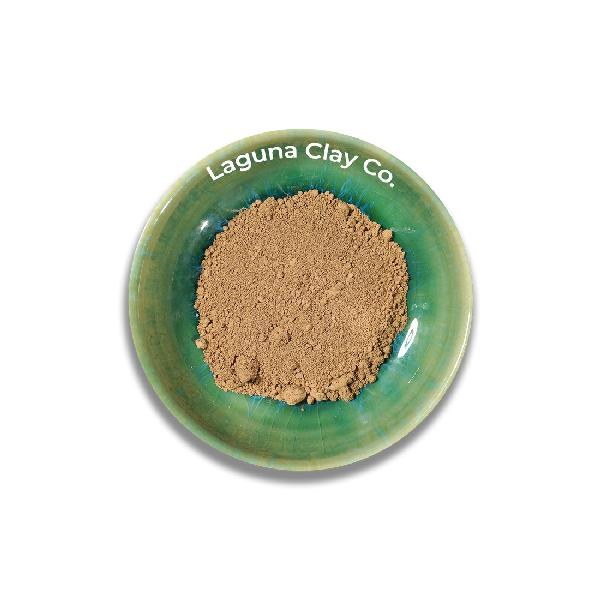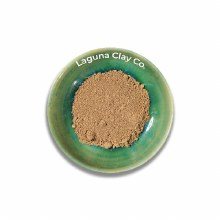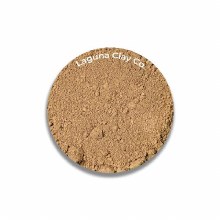Rutile, Ceramic Grade (50# Bag)
| Qty: | Unit Price per LB: |
|---|---|
| 5 | $8.78 |
| 10 | $7.80 |
| 50 | $5.85 |
| 100 | $4.88 |
Item#: 4150437
MPN: MRUTCER
Description: Iron Titanium Mineral
- Full bag is 50 lbs
- In ceramic glazes rutile is more often considered a variegator than a colorant. As little as 2% can impart significant effects in stoneware glazes.
- It is normally used in combination with a wide range of metal oxide and stain colorants to produce surfaces that are much more visually interesting.
Rutile is the mineral name for natural crystals of titanium dioxide. However in nature rutile is always contaminated by other minerals (especially iron but also things like tantalum, niobium, chromium and tin, the analysis provided here is obviously a simplification). In ceramics, the term 'rutile' is generally understood to refer to the brown powder into which these minerals are ground. Industry accepts up to 15% contaminants (below 85% titanium is called ilmenite). Rutile is considered an impure form of titanium whereas ilmenite is considered as FeTiO3. Grades of rutile are sometimes named after one of the impurities. Rutile is employed in many industries, ceramic uses are minor in comparison. There are large reserves of rutile in the world so supply shortages are related to other factors. Manufacturers often blend ores from different deposits, at times from different parts of the world. And they improve the TiO2 content by furnace-processing. Large users of rutile will often track batch numbers and test when the number changes. A situation can sometimes be dealt with by adjusting the amount of rutile in the recipe, firing differently or milling it. In more serious cases additions of iron or pure titanium might be needed.
Rutile is available in light tan calcined ceramic grade powder (light rutile), darker uncalcined powder (dark rutile), and granular form. Either ceramic grade of powder is normally ground very fine (e.g. 325 mesh). In glazes, it is better to use a calcined grade (since the decomposition of raw rutile during firing could be a source of glaze imperfections like pinholing and bubbles). In our experience the LOI (weight loss on firing) when calcining rutile from our suppliers is less than 1%, so we are getting a calcined material. Milled rutile is normally ground to 200 mesh.
Rutile produces many crystalline, speckling, streaking, and mottling effects in glazes during cooling in the kiln and has been used in all types of colored glazes to enhance the surface character. It is thus highly prized by potters, many attractive variegated glazes are made using it. Many potters would say that their living depends on their rutile supply!
Rutile is very refractory in oxidation, even a mix of 50% borax alumina-free frit like Ferro 3134 will not melt it in a crucible. In reduction, the improvement in melting will depend on the amount of iron present.
In ceramic glazes rutile is more often considered a variegator than a colorant. As little as 2% can impart significant effects in stoneware glazes. It is normally used in combination with a wide range of metal oxide and stain colorants to produce surfaces that are much more visually interesting. In glazes with high melt fluidity (e.g. having high boron), large amounts of rutile (e.g. 6-8%) can be quite stunning. The rutile encourages the development of micro-crystals (it is crystalline itself) and rivulets. Since rutile contains significant iron its use in combination with other colorants will often muddy the color that they would otherwise have or alter it if they are sensitive to the presence of iron. Even though rutile generally makes up less than 5% of stoneware glazes that employ it, they are often called 'rutile glazes' in recognition of its dramatic contribution.
Excessive rutile in a glaze can produce surface imperfections. In addition, when rutile is employed in higher percentages (e.g. 5%+) a given percentage might work well whereas a slightly higher amount can look drastically different. Such situations are vulnerable to chemistry changes in the supply of rutile. Thus people will often do a line blend trying a range of percentages to determine an optimal amount.
In glazes, rutile can be quite sensitive to the presence of opacifiers. While an unopacified glaze might appear quite stunning, the addition of a zircon opacifier will usually drastically alter its appearance and interest because the variegation imparted is dependent on the glaze having depth and transparency or translucency. Strangely rutile and tin, another opacifier, can produce some very interesting reactions and it is quite common to see tin in amounts of up to 4% in rutile glazes. In these cases, the tin appears to react in the crystal formation rather than opacify the glaze.
Pure rutile powder, although its color makes it appear to be a crude ground mineral, normally contains 95%+ titanium dioxide. However, this does not mean that you can use a 95% titanium:5% iron mix and get the same result in a ceramic glaze (obviously line blending would be needed to match the amount of iron). The mineralogy and significant other impurities in rutile are a major factor in the way it acts in glazes (not easily duplicated using a blend of other things). Sometimes the special effects that rutile produces in glazes are also partly a product of a coarser grade (larger particle size). These likewise cannot be easily duplicated by more refined materials. Unfortunately, the trend at some mining operations (at least in Australia) is to fine grind the rutile on-site, making it more difficult for ceramic operations to obtain the coarser grades.
Although rutile will normally stain a glaze brown or yellow, its crystallization effects can significantly lighten the color of iron glazes. Higher amounts of rutile in stoneware glazes will often contribute glaze imperfections.
Granular rutile is sometimes used in bodies and glazes to impart fired speckle.
Rutile is used for special effects in leaded glazes and can form up to 15% of the recipe.
Rutile can be used as a tone modifier to soften the more potent colorants.




Share:
Share on Facebook Share on Twitter Share on Pinterest Tell a friend